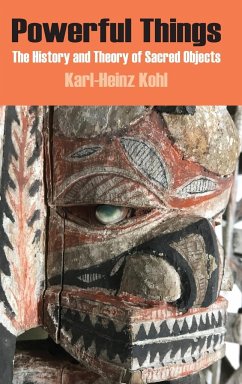We both give meanings to, and derive our own meanings from, the multitude of objects we live amongst. Trivial things remind us of past loves; old things embody an idealized past; on other things we believe our fate depends. In this book, Karl-Heinz Kohl describes relationships to sacred objects from the viewpoint of anthropology and the history of religion, showing how people of all cultures ascribe quite immeasurable value to things and make their own destiny dependent on these objects. During their voyages of discovery, Portuguese seafarers came across Africans who attributed mysterious powers to objects that became known as 'fetishes', and the concept of 'fetishism' soon cast a spell over European thinkers. The Church condemned it as the work of the devil, while for the philosophers of the Enlightenment it proved that no religion was rational at heart. But the fascination remained - Hegel, Comte, Marx and Freud - each of them tried to solve the riddle of fetishism in their own way. And it is fetishism that is the starting point for this book, which offers nothing less than a comprehensive theory of the sacred object, from the stone cult of ancient Israel and the Bible's prohibition on images, to the medieval cult of reliquaries, Native American sacred bundles, magical figures of the BaKongo, and the idols of the Ancient Greeks. Tracing the fate of ancient cult images since their rediscovery in the Renaissance, Kohl comes to a striking conclusion: in the secularized societies of the Global North, it is the museum cult that is the bastion of contemporary fetishism.
Hinweis: Dieser Artikel kann nur an eine deutsche Lieferadresse ausgeliefert werden.
Hinweis: Dieser Artikel kann nur an eine deutsche Lieferadresse ausgeliefert werden.









